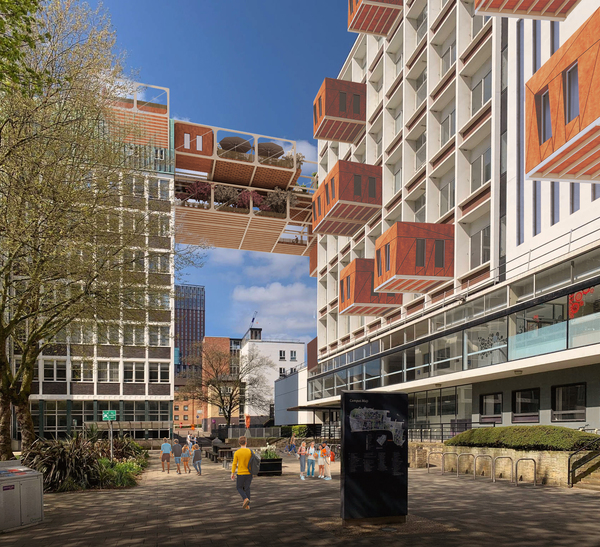Having worked on a live project at the beginning of the year that culminated into an adaptable insect farm that could be altered to fit specific sites, the main area of work that has remained a constant throughout the year is using modular methods of construction.
In particular, the focus of the projects has been to show and implement modular design to benefit environmental performance leading to research looking at sustainable materials and low operational energy. This informed the modules design further by creating a mono-material timber module that has a thermal conductivity value similar to a Passivhaus design but with reduced wall thickness for a lightweight and space saving design.
After researching and refining this modular design, the final goal was to implement it onto an existing structure. The main reason for developing a modular concept was to show how it can be applied to re-use an unwanted or under-used structure and turn it into a useable and engaging space.
To show this a site was chosen that is currently in the process of beginning demolished and replaced with high-rise towers, namely the UMIST campus. The campus is one of the best examples of Manchester's modernist architecture, and demolishing it not only adds to carbon energy use but also loses a site pivotal to Manchester's history. The modular re-use of the site's structures shows that the campus could be retained and re-used in a more functional way.
This re-use project turned the campus into a vibrant and engaging community of residential homes with the focus of bringing all the residents together. Vierendeel truss frameworks connect all the campus buildings together and meant that residents can interact with one another both inside the existing building and the external modules that protrude out of the large concrete monuments of Manchester's modernism.


